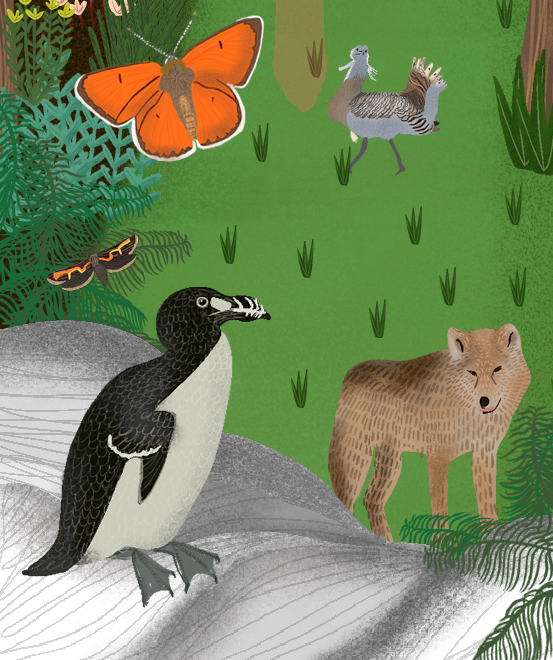500 years ago, the UK garden as we know it wouldn’t have existed but what wildlife might have roamed outside people’s houses and the farmland they owned?
Prior to the 1800s, the Great Bustard was most commonly found roaming the farmlands of the South of England, but in 1832 the last known bird in Britain was shot and the species was confirmed as extinct in the UK. Whilst Portugal and Spain are now known to have 60% of the worlds remaining population, an attempt to reintroduce the bird into Britain has seen a small population of 40 birds, that live on Salisbury Plain.
Before the 1830s people living in the North West might have seen the Euclemensia Woodiella, otherwise known as the Manchester moth. Specimens of the yellow and brown moth were collected from Kersal Moor in Salford in 1829, but the species has not been found in Britain since.
Whilst not found in a typical garden setting, for people living along Scottish coastline and the more isolated offshore islands, the sight of a Great Auk coming ashore to breed would have been a rare treat to behold. The flightless bird was deemed extinct in Great Britain in 1840 when the last known Auk was captured and killed, however the species was classified as officially extinct in 1844.
Whilst it might be hard to imagine, 500 years ago, people living in the more remote parts of the British Isles prior to 1680 may have lived alongside the Eurasian Wolf. Whilst extinct for the most part in Western Europe, large populations of wolves can still be found to the east, with Russia home to 30,000.

faded fruits gummies
Hey are using WordPress for your blog platform?
I’m new to the blog world but I’m trying to get started and create
my own. Do you require any html coding expertise to make your own blog?
Any help would be greatly appreciated!
buy steroids credit card
Hi my family member! I want to say that this post is amazing,
great written and come with almost all important infos.
I’d like to look more posts like this .